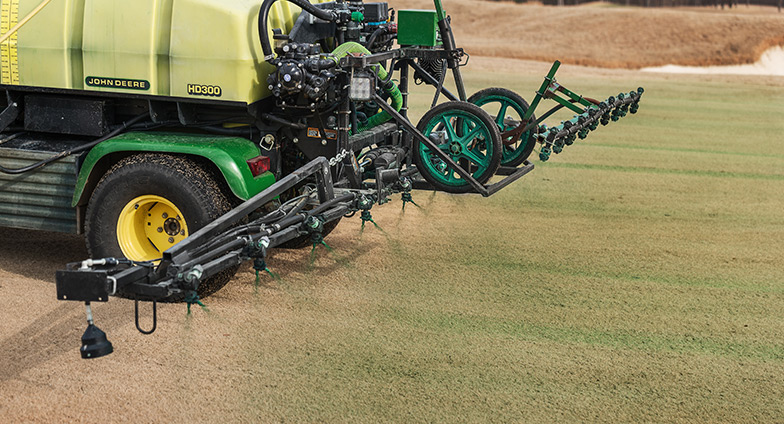How greener grass with turf colorants saves golf course managers money
September 19, 2019 by Adam NewberryThe old adage that the grass is always greener on the other side has stood the test of time for a reason. People love the aesthetics of beautiful and lush green grass. Golf turf maintenance and turf appearance takes a greater significance for special events like golf tournaments and other sports events where an attractive athletic field is of primary importance. One of the reasons is that people paying high prices to attend professional sporting events, or to enjoy the benefits of club membership, have high expectations.
A counterargument to the common saying is: "The grass is greener on the other side of the fence because they watered it." But recent industry trends add a new twist: The grass is also greener because they colored it.
Turf colorants growing in popularity
Golf course superintendents, out of necessity, need to become wizards in both the science and the art of turf management across seasons. The grass experiences damage from the freezing temperatures of long winters as well as from light and heat stresses from summer months.
Turf colorants have become an indispensable tool in the arsenal of turf managers to cover golf course blemishes, conceal dry spots and mask turf discoloration caused by those harsh weather conditions.
A recent GCI research report, gathering data from 2014 to 2018, points to an increase of nearly 10% during this time range in the use of turf colorants by golf course superintendents. Spending has also increased by more than half. Not surprisingly, long-lasting turf color is something 75% of those participating in the report said was important, while 43% percent said that the turf color needed to match the desired look for their golf course members.

Turf color leads to other benefits
This recent growing trend in the reliance on turf colorants has seen the emergence of additional benefits — bolstering the long-established aesthetic enhancement of lawns. The use of turf colorants for golf courses also represents a notable cost-saving advantage in terms of labor and resources.
Traditionally, turf caretakers have been relying on the process of overseeding — which involves the planting of grass seed directly into existing turf. Overseeding eliminates the need to tear up the soil and allows an easy way to conceal bare sports and intensify the lawn's color. But this labor-intensive process can be costly.
Turf colorants and pigments like those found in Milliken’s Evergreen® lines offer a cheaper alternative to the sole reliance on overseeding. They reduce the need for mowing, high water usage, fertilization and irrigation. Many turfgrass managers from top golf courses hosting televised international competitions use a system of "hybrid-overseeding." Combining the best of both worlds, adding turf colorants to their overseeding toolbox offers turf superintendents as sustainable and cost-effective solution. Water costs alone can be quite prohibitive for golf course managers, not to mention the additional environmental concerns of excess water usage.
Milliken's line of turf paints, colorants and spray indicators offer turf market managers as well as a wide range of agricultural producers cost and time-saving solutions to meet and optimize their needs.
